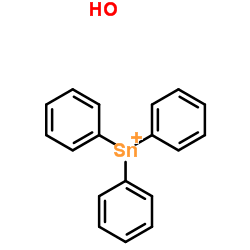Effects of fentin hydroxide on reproduction of the Japanese quail (Coturnix coturnix japonica).
K Grote, L Niemann, C Gericke, B Selzsam, I Chahoud
Index: Environ. Res. 101(1) , 81-8, (2006)
Full Text: HTML
Abstract
In a one-generation reproductive study, the fungicidal compound triphenyltin hydroxide (fentin) was administered to adult Japanese quail for 6 weeks at dietary levels of 3 and 30 ppm. Reproduction was significantly impaired in the high-dose group. The principal adverse finding was a marked increase in embryonic mortality, resulting in a lower hatch rate. Furthermore, a reduction in egg production was observed with ongoing duration of treatment. Most of the other reproduction-related parameters were not affected. The in ovo losses are assumed to result from a direct toxic effect of the test substance on chick embryos. At the low dietary level, reproduction was not altered. In contrast to the obvious reproductive toxicity, there was only limited evidence of adverse treatment-related findings in the adult birds. However, because such minor effects as an increase in mean liver weight, which was accompanied by macroscopic liver findings and a decrease in T4 serum concentration, were still seen at 3 ppm, a no-observed-effect level could not be established.
Related Compounds
| Structure | Name/CAS No. | Molecular Formula | Articles |
|---|---|---|---|
 |
Du-ter
CAS:76-87-9 |
C18H16OSn |
|
Transactivation of the human retinoid X receptor by organoti...
2015-07-01 [Metallomics 7 , 1180-8, (2015)] |
|
Influence of organotins on rat platelet aggregation mechanis...
1986-02-01 [Environ. Res. 39(1) , 172-9, (1986)] |
|
A biochromatographic technique for the quantitative estimati...
[J. Chromatogr. A. 435(1) , 210-8, (1988)] |
|
Larvicidal activities of some organotin compounds on mosquit...
2009-01-01 [Eur. J. Med. Chem. 44 , 260-73, (2009)] |
|
Genotoxic effects of triphenyltin acetate and triphenyltin h...
1999-07-21 [Mutat. Res. 444(1) , 167-74, (1999)] |